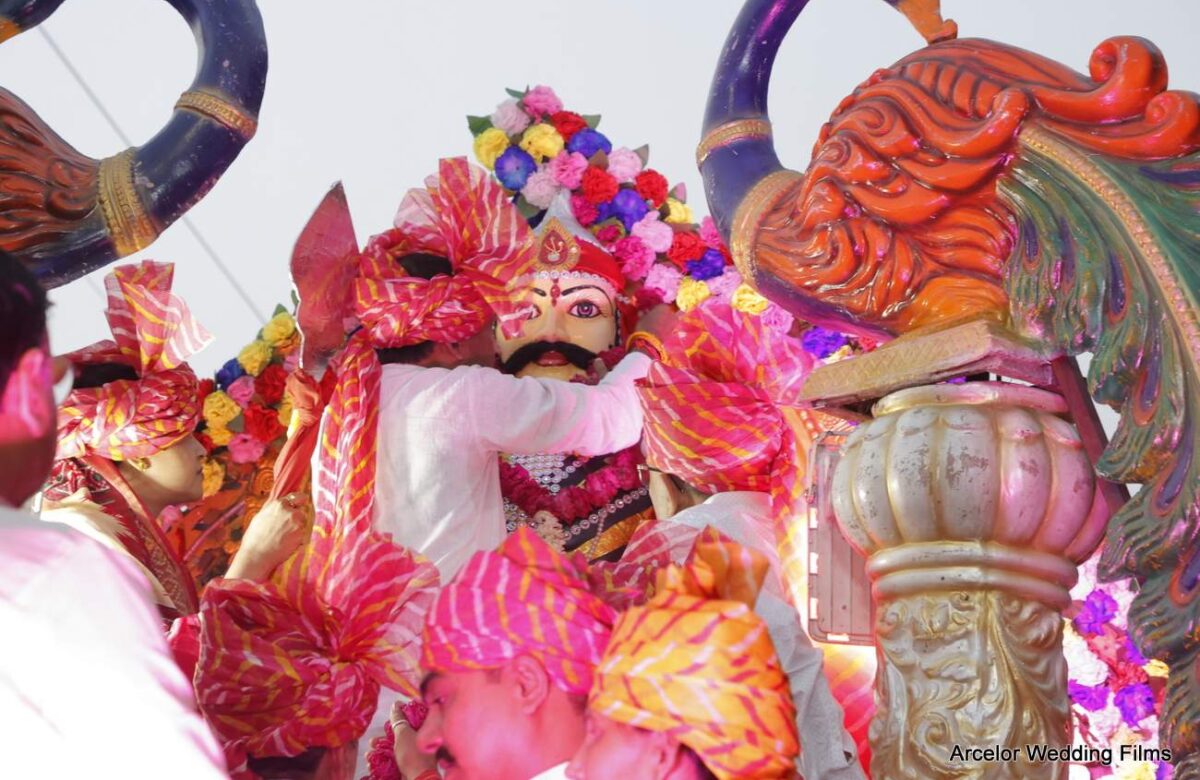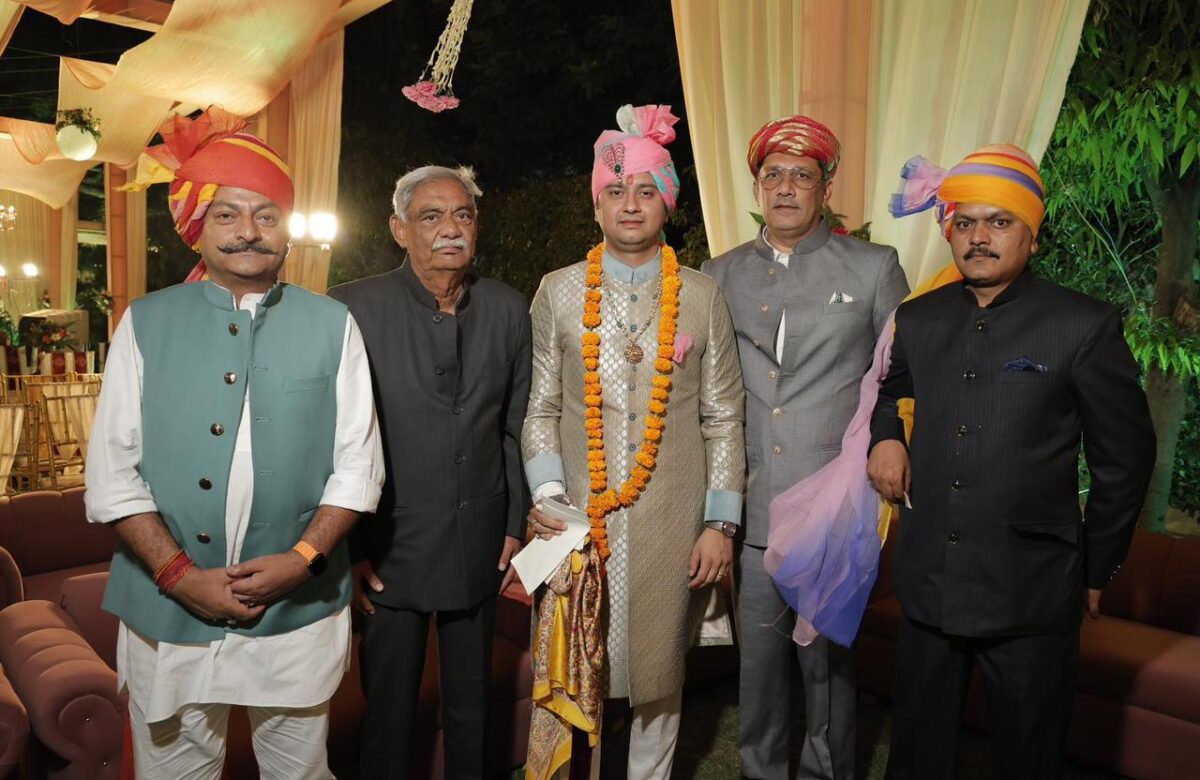All the people who live in Maharashtra, are aware of our rich Indian history. In my last article, I wrote about all the Maratha empire who rule India and how they fought for our country and did so many sacrifices so that their future generation doesn’t have to struggle anymore and that’s what happen, because of them we are living peacefully today.
Talking about history, we all know that the single most important power to emerge in the long twilight of the Mughal dynasty was the Maratha confederacy. Maratha was well known for its rich culture and values, which still have been followed by their existing families. Monarchy is no longer present in India anymore but there are a few Indian royal families who still live a life of heritage and luxury.
There are many different districts in Maharashtra where Chhatrapati Shivaji Maharaj’s descendants can be found. Here is a list of some well-known royal families belonging to Maratha’s empire:
- Gaekwads of Baroda, Gujarat.
Gaekwar dynasty, Gaekwar also spelled Gaikwar or Gaekwad, Indian ruling family whose capital was at Baroda (now Vadodara in Gujrat state. The state became a leading power in the 18th-century Maratha Confederacy. The founder of the dynasty was Damaji I who had risen to power by 1740. The last Gaekwar, Sayaji Rao III, died in 1939.
The Gaekwads have remained in power in Baroda since the early 18th Century. Currently, Samarjisingh Gaekwad, 52, is the head of the royal family of Baroda. He has also inherited property worth over 20,000 crores, including 2000 acres of prime real estate, 600 acres of land, and the 187-room Laxmi Vilas palace.
- Scindias of Gwalior, Madhya Pradesh.
The Scindias (Sindhia or Shinde, as they were originally known), were the ruling dynasty of the princely state of Gwalior (now in the central Indian state of Madhya Pradesh). Their rule started in the mid-eighteenth century and continued through to the mid-twentieth century until all the princely states were merged into the republic of independent India. Subsequently, when the power of the Chhatrapati of Satara and the Peshwa of Pune waned, the Scindias continued as kings, ruling from their capital of Gwalior in the present-day state of Madhya Pradesh.
Presently, Politician Jyotiraditya Scindia, who belongs to the royal family from Gwalior stays in his ancestral home, the Imperial Jai Vilas Mahal in Madhya Pradesh. He also owns large land parcels in Maharashtra and two apartments in Mumbai.
The imperial Jai Vilas Mahal accounts for the biggest share of Jyotiraditya Scindia’s net worth. The Jai Vilas Palace, as it is also called, covers a whopping 40 acres and is estimated to have more than 400 rooms in total. A portion of the Scindia palace has become a museum wing, while the remaining still accommodates the royal family.
- Bhonsales of Kolhapur, Maharashtra.
The Bhonsle (or Bhonsale, Bhosale, Bhosle) are a prominent warrior clan within the Maratha clan system who served as rulers of several states in India. Bhonsle claims their origin from Suryavanshi Sisidia Rajputs.
The most prominent member of the royal clan was Shivaji, the founder of the Maratha Empire. His successors ruled as maharajas from their capital at Satara, although the de facto rule of the empire passed to the Peshwas the Maratha hereditary chief ministers, during the reign of Shahu I
The title ‘Chhatrapati’ (equivalent to emperor) is exclusively used for the rulers of the Bhonsle dynasties of Satara & Kolhapur, as they are the descendants of Shivaji. The Bhonsle ruled several Indian princely states namely Satara, Kolhapur, Thanjavur, Nagpur, Sawantwadi, Akkalkot, etc.
Shahu Chhatrapati was the Maharaja or the king of the Indian princely state of Kolhapur. Also known by the name of Rajarshi Shahu, he was known to be a great social reformer of his time. It is relevant to note that as Chhatrapati Shahu Maharaj was the prominent central figure and the powerful moving force of these movements, he applied tremendous influence to planning a social revival and changing the course of social history in Maharashtra. After the control of Chhatrapati Shahu Maharaj, the Bhosale Dynasty continued the Throne of Kolhapur. Post-Independence Princely State of Kolhapur became an integral part of the Union of INDIA.
However, the royal family is still held with High Respect by the people of Kolhapur. The Current Maharaja of Kolhapur Shreemant Shahu Maharaj and his family stay in the Palace which has been the residence of Chhatrapati Shahu Maharaj. It is one of the most famous places in Kolhapur.
The ground floor of the palace is converted into Shahaji Chhatrapati Museum in the year 1974 by Shahaji II. While the current maharaja of Kolhapur Shreemant Shahu Maharaj lives on the first floor of this palace. The beautiful palace is built in black polished stone and is a marvelous architectural feat. The whole building is eight-angled and has a tower in the middle. The ground floor of the palace is converted into Shahaji Chhatrapati Museum in the year 1974 by Shahaji II. While the current maharaja of Kolhapur Shreemant Shahu Maharaj lives on the first floor of this palace.
- Patwardhan’s of Miraj, Maharashtra:
The Patwardhan Dynasty was an Indian dynasty established by the Chitpavan Brahmin Patwardhan family, ruling several parts of the Maratha empire from 1733 till 1948, when it acceded to the Dominion of India. At the peak, various branches of the dynasty controlled several jagirs within the Maratha Empire, and later became protectorate princely states in British India.
After the Treaty of Salbai aligned the Marathi with the British, the three Patwardhan chiefs lent their armies to the British campaign against Tipu Sultan. They gained a reputation for heroism and success in battle. Their contributions became highly valued by the British, and in 1804 Arthur Wellesley called the Patwardhan “the most ancient friends that the British Government have in the Maratha Empire” and “the most respectable of all the Peshwa’s subjects properly so-called”.
- Ghorpades of Sandur, Karnataka.
Sandur was a princely state which was ruled by the Ghorpade royal family of the Marathas. It was founded in 1713 by Shrimant Sidalji Ghorpade, a Maratha nobleman. Not much is known about the Sandur Fort, except the fact that it was built by the Marathas. Later on, the territory of Sandur was annexed to the kingdom of Mysore. And at the beginning of the 19th century, Sandur was incorporated into the Peshwa dominions. The kings of Sandur came under the political authority of the Madras Presidency when the Bellary district was taken over by the British. In 1818, Sandur formally came under the British. Sandur was merged with the union of India in 1949. And was later taken into the Bellary district which was then transferred to the state of Mysore in 1953 and was later renamed Karnataka.
Ghorpade family is also famous for their Royal Shivavilas Palace, Sandur completed in 1940 and home to the last maharaja of Sandur, Yashwantrao Gorpade, which is presently turned into a luxurious hotel. The homeyness in Shivavilas Palace probably comes from the fact that it was in use by the royal family and parts of their lives here are still discernible.
The Shivavilas Palace at Sandur, Bellary district, built in 1940, is now a WelcomHeritage hotel. It has nine deluxe rooms, a suite, a Maharaja suite, and a warren of antechambers, dressing rooms, and balconies that is the Maharani suite.
Live life King Size isn’t this phrase perfect for all these royal families, they are living their king-size life. I am quite stunned after knowing about their stories and their lifestyle. Well, there are many more royal families stays India which belong to Maratha, and I will be sharing everything about them in my next article, so stay tuned!!!



